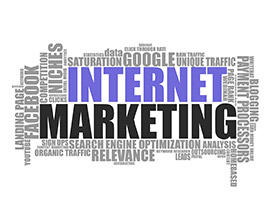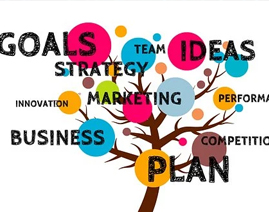Stop Talking About and Start Driving Digital Marketing Transformation
In marketing, and right across business, we often talk about the need for ‘digital transformation’ but it seems much rarer that we look back and here stories of how it’s practically been driven, and what underpinned that success. Recently I sat down with Michaela Jefferson to talk through exactly how we’ve driven that across EMEA at GSK Consumer Healthcare and I wanted to build on some of those thoughts here.
Even the very notion of ‘digital transformation’ can be a bit cliché, what do we really mean by it? We know for sure that the world around us is changing, that there are new digitally driven technologies & capabilities available not only to us but also to our consumers - It’s your job in any industry to stay up with changes like this, but it’s even more the case in marketing where our function is quite literally to understand and relate to our changing consumers. Digital transformation to me means changing our marketing approach to meet these changing audiences, as well as embracing new opportunities to evolve how we work and sell.
When I joined GSK from Diageo 3 years ago the task was to drive exactly this – to take on the almost 100 markets that make up our complex Europe, Middle East & Africa region and to help transform the marketing approach across them. If you’re not familiar with us, GSK is a sizeable advertiser - Our global media budget is something around the £1.5 billion mark, across healthcare brands including Advil, Sensodyne, Voltarol & Centrum, around a 1/3 of which is spent in the region I oversee.
Chasing arbitrary digital media targets is rarely a wise move but when I joined our markets were spending less than 20% of their media budgets on digital opportunities and in around 2 years we’ve managed to double that. Gone from having some markets with less than 10% spend, to having some that have crossed the 50% mark. We’ve done that because consumers are changing, because we’ve shown that new opportunities do work, and we’ve found better ways of measuring, modelling & showing us the right thing to do. I’m not in the slightest bit anti-TV, in fact it remains our most effective channel & where we spend the majority of our money, but we needed a balance to reflect these changes. That’s the journey we’re on, now we’re confident we can also drive results through digital.
So, what has it taken to drive this change? I started to think this through for a podcast I recorded recently and ended up with a list of 6Ps which I think have been critical – they won’t panic Mark Ritson though as they’re not an attempt to replace the 4Ps of marketing, but who doesn’t like a little bit of alliteration?
1 - People
It’s kind of obvious, but it sometimes gets lost in our industry that at the end of the day, marketing is a people game. Yes, we have programmatic technology, targeting & data, but we’re trying to talk to people and sell to people, and that’s driven BY people. People can be the biggest barrier to change but they can also be a major accelerator when you get them fully behind you.
When I joined we had a great group of people, but they didn’t feel like a team and they weren’t pulling together in the same direction. I’ve 10 media leads spread across the region who are embedded in markets but ultimately part of our regional and global media community and the fact I’ve most focussed on, and am most proud of, is unlocking their potential. Today they’re forever challenging each other, and me, asking tough questions, and working on projects & ideas with benefits well outside their geographic remits.
It’s easy to feel isolated as a lone ranger for a global team sat within a market which is why building that stronger internal network has been critical, from more regular 1:1 connections through to weekly team meetings and occasional wider & more open forums.
You need to be joined up in a media team because we’re surrounded by hundreds of marketing colleagues who we need to bring on the journey with us. We’ve worked hard to get them onside so we’re pushing together and not against one another
A lot of the narrative in our industry these days has been around tech, data and automation, and sometimes we forget the importance of people. Covid has been a bit of a wake-up call for many of us of just how important people are and how important it is to find ways of making people work together.
2 - Partners
Partnerships are a powerful way to accelerate your own business by drawing on the knowledge and capabilities of others. Working in media we have a small internal team but close to 300 people at our partners Publicis in our extended ‘PlatformGSK’ team. We appointed them the same time I joined the business, right down to having a joint induction, and they’ve been critical to that journey.
It was a conscious decision to consolidate with one partner. Having multiple agencies can provide for healthy competition, but it also creates silos across the business and if you’re actively playing them off against one another you’ll never get past the pain of pitch mode. Whilst our markets are still empowered to make marketing decisions, we’ve used their network to help drive greater global to local connectivity, as well as rapidly scaling best practice and opportunities across the region. We’ve even built out an advanced hub team where much of our digital planning & buying can be done meaning that smaller markets can benefit instantly from what we prove out in others.
Our agency isn’t our only partner of course, we’ve focused heavily on building stronger relationships with the usual candidates of Google & Facebook, but also more diverse partners like Gay Times & Brand Advance, and up-and-coming media companies like Jungle Creations & Teads. As an industry we revert naturally to treating partners as vendors and hold them at a distance, but when you get the relationship right they can challenge you and push you along on your own ride.
3 - Processes
With AI, VR, automation and other shiny new objects out there, talking about digital transformation is usually a little sexier than talking about processes and briefing. I was a little surprised however when I joined that there weren’t more consistent approaches between markets and regions, nor a well established POV on the exact role media was playing.
We’ve put a lot of work into building a stronger media product within out business, built on a clearer view of how media can connect us to billions of paths for penetration growth. We now have clearer global ‘connections planning’ processes & guidelines, and have moved from focussing on linear media plans to ecosystems maps that can really show how channels interact and connect across the consumer journey.
Being able to have more credible conversations across marketing and through into finance has led us to more analytical approaches to media. We’ve introduced a more structured ‘sufficiency’ approach to look at market conditions, growth audiences, and effectiveness data to really map out the optimal amounts to spend. It’s really informed our budgeting decisions, but also brought a new focus on ensuring we’ve got presence right through the consumer journey and not just at the top of the funnel. It’s a key part of something we call a repeatable growth model, which is a new cross-business process to help us really explore and tap into growth opportunities.
4 - Passion
All the above is a lot easier to drive when you can inspire people to want to do it, not force them into it, and one of the biggest unlocks to that is the passion & energy that you and your team are able to inject into the system.
That hasn’t been easy over the last couple of challenging years with people distant and working from home, but in a regional role you’re used to having to work with some teams remotely. Our monthly ‘all hands’ calls with hundreds of attendees have been a key part of bringing that energy and enthusiasm in, as well as giving markets an opportunity to share their own case studies and successes with one another. You can make anything sound interesting if you simplify it and put the energy in, even viewability.
We’ve also looked externally and how we can inspire our people with the impact we can have across the wider industry. We’ve deliberately chosen to be a louder voice in the industry around some of the topics closest to our hearts from diversity & inclusion and ethical media investment, through to creativity & marketing effectiveness. We want our people to be proud, passionate and excited about these things.
5. Pilots
I’m always cautious about pilots because in digital marketing we get very obsessed with testing and learning and jumping on the latest big exciting thing, when so much of great marketing is already well proven and established. Yet pilots are crucial to moving you forwards into new spaces and platforms which could grow into real scalable opportunities.
I’d encourage you to develop and adopt “golden rules” on key platforms such as Google and Facebook that worktime and again, and which consistently deliver. We sometimes hear complaints about ‘cookie cutter’ media plans, but if you can work out the right levels of reach & frequency which deliver in your categories then why wouldn’t you repeat them? And then focus your efforts on the icing of the cake in terms of creative routes, partnerships and innovation that will build on that.
TV works, YouTube works, Facebook works, search works, as do other key platforms, but you never know what’s coming next and while those things work now, there might be new ways in the future. We’ve pushed all our teams to be testing and learning new platforms and new approaches, then every quarter we come together for a ‘scaling call’, where we share some of the pilots and learn from what’s worked, and what hasn’t. We’ve had successful trials which we’ve managed to roll out across more than a dozen other markets in weeks.
6. Performance
At the end of the day any digital transformation must drive performance. Becoming more digital is a popular, trendy thing in the industry that everyone is talking about it, but we really want to measure the performance of that and prove it’s the right thing to do.
I don’t like when businesses set an arbitrary target of getting to 50% digital, we began our journey partially in that way, but we’ve quickly evolved. Our focus is on getting the right mix across the right channels right across the consumer journey, not just trying to be more digital for the sake of it.
We’ve been working with our insights team on how we better close the loop on media performance, both in the short & long term. As an FMCG company we mainly sell through 3rd party retailers rather than directly to our consumers – historically we’ve thus had to rely on slower forms of performance analysis, such as media mix modelling (MMM).
We’re evolving our approach towards a more ‘always on’ approach to close that loop more rapidly, but crucially also adopted a live brand tracking approach which gives an early indication of the long-term brand building benefits we might be driving. That approach draws on a range of sources from classic survey research through social listening and search data. We’ve also tapped into new digital measurement approaches, especially with our key partners, using various brand & short-term sales metrics to evaluate subtler changes in our media approach.
The approach is driving tangible results for our business even across challenging years. It’s an opportunity to create business advantage – to build brands, drive sands and ultimately to be more consumer focused. If consumers are spending time in these spaces, then we absolutely should be as well. And it’s no surprise that if you show up where consumers are and get in front of them and drive mental availability and physical availability, it works for sales.
You May Also Like

Brand Equity – How can the credit function help?
Investing in Brand Equity is becoming an effective business strategy not only to retain customers an...

Why winning customer trust is key to startup success
Interview of Philipp Kristian, author of 'The Trust Economy’ What are the top three emerg...

Innovation-Driven Marketing vs. Marketing-Driven Innovation
Is your company adding value or are you pretending and trying to make a name for yourself? Why do I...

Why Is Corporate Identity Important For Any Business?
Corporate identity is quite similar to what we talk about our own identity, and the specifics that d...

Out-of-Box, In-the-Box, New-Box, Other-Box, No-Box
Thinking For years supporters and detractors of creative thinking in the workplace have talked about...

Pricing Strategy
In general, the pricing strategy is very important for retail companies in order to achieve the sale...

Why Content is the true north of Account-based Marketing? – Final
We began exploring the four-legs of the content strategy tool, and uncovered just why context is eve...

5 Trends and Challenges for the Agency Industry
One of the trends to continue will be brands bringing agency work in-house. As Ramchandani writes, &...

How to choose a domain name?
A domain name is the website name that people can type into their browser like >google.com,&...

How to promote your Business on Google Maps with Google Posts
Google has just rolled out yet another useful tool, especially for small business owners: Google Pos...

Tactics to increase conversion rate
ALPHA Sales System Most sales systems focuses on the presentation, objection handling and closing...

Challenges in Deep Learning technology
Although the estimated market growth for Deep Learning is $10.2 billion by the end of 2025, it has s...

Content Marketing Phooey
I agree "Content Marketing" is a VITALLY important component of the Promotional Mix and es...

On Becoming Customer Centric
On Becoming Customer Centric Some say “customer centricity” has become ...

It’s the stakeholder, stupid!
Why it took me four years to build a website... This week marked an important milestone in my profe...

UltraCreativity - "Cannot" does not exist in my vocabulary!
I’ve decided long ago that the word “cannot” does not exist in my vocabulary. For ...

Platforms And Content – The Business Model Of The 21th Century
Amazon is buying the rights of UEFA Championships, Disney is launching/expanding its own content pla...

Tools & Resources Every Marketer Needs To Navigate COVID-19 Crisis
It’s clear that COVID-19 has drastically altered the advertising and marketing landscape as mo...

The Hidden Truth In Creating Best Airbnb Experience
Here are Questions That I have Got This Week Around Airbnb Experience From Fellow Friends and Contac...

What is the future of Programmatic Advertising?
Data in the 21st century is like oil in the 19th century. Data is currently seen as valuable asset w...

From PR to e-PR - Future of media relations
Imagine if 20 years ago, someone told you that every organization will need accounting software, wha...

When personal brands go to war...
The start of this past weekend was highly interesting for Twitter users. It wasn’t actually a ...

Surviving and soon thriving again: what you're doing now really matters
Five weeks ago, before any of us really knew ‘how bad things would get’ I wrote on Linke...

Good Brands Sell Products; Great Brands Tell Stories
If you need to survive in this dog-eat-dog business world, then you need to connect with customers i...

Customer Experience lessons we learned and applied in our Art Gallery
WE OPENED OUR ART GALLERY IN 2011 We learned a lot of Customer Experience lessons in the 7 years si...

Why Content is the true north of Account-based Marketing? - Part I
At a recent conference, I was asked rather unexpectedly by a senior business executive, “What...

"MIND" Your Image
It’s always said, what you focus, expands! It’s pretty common for many of us to have en...

Why Content is the true north of Account-based Marketing? - Part II
"A wealth of information creates a poverty of attention." - Herbert Simon, Economist Just...

Premium Story- Customer Experience
Every three, four years I have the pleasure and privilege to choose and pick a new car. You can imag...

How to Fuel, Shape and Scale Creativity
It is well established by now that creativity is one of the main differentiators between s...

Artificial intelligence in E-mail marketing
Artificial intelligence, in the broadest sense, refers to a human-like ability to perceive, understa...

10 e-commerce user experience must-haves
They say you never get a second chance to make a first impression, and in the world of e-commerce, f...

Want to build your personal brand? Then STOP being #antisocial on social media
Have you ever been to a networking event where you register your name, put your name card in the &qu...

9 Ways to Transform the Healthcare Experience with Conversational AI
Introduction Conversational AI is a pivotal aspect of digital transformation in the healthcare indu...








Jerry Daykin
VP, Head of Media Beam Suntory
Jerry Daykin is a global marketing leader who has held senior roles at brands including Beam Suntory, GSK Consumer Healthcare, Diageo and Mondelez. Based in London, UK, he is a WFA (World Federation of Advertisers) Diversity Ambassador and co-chair of its Diversity Task Force, where he created its framework for representation and inclusion. He also sits on the diversity and inclusion boards at the Advertising Association and ISBA, as well as on boards at the Conscious Advertising Network and Outvertising. A regular conference speaker, he has written for The Drum, AdWeek, Campaign, Marketing Week and The Guardian.